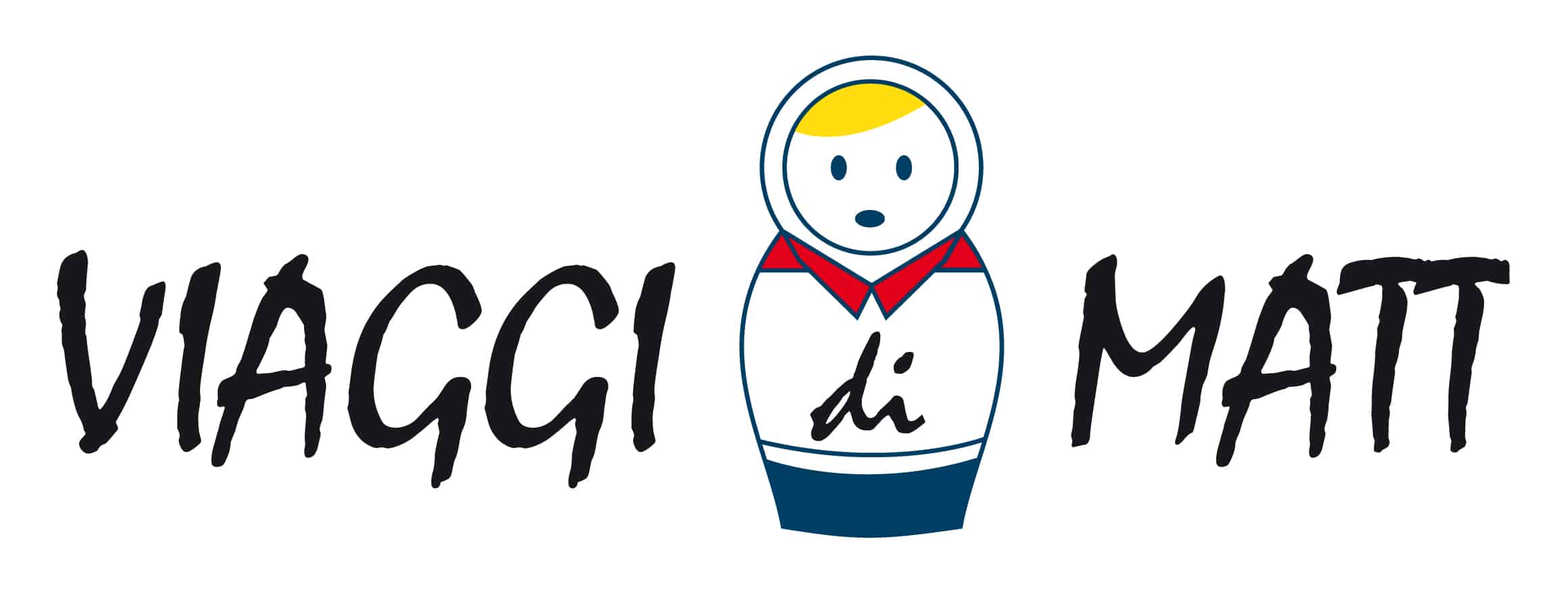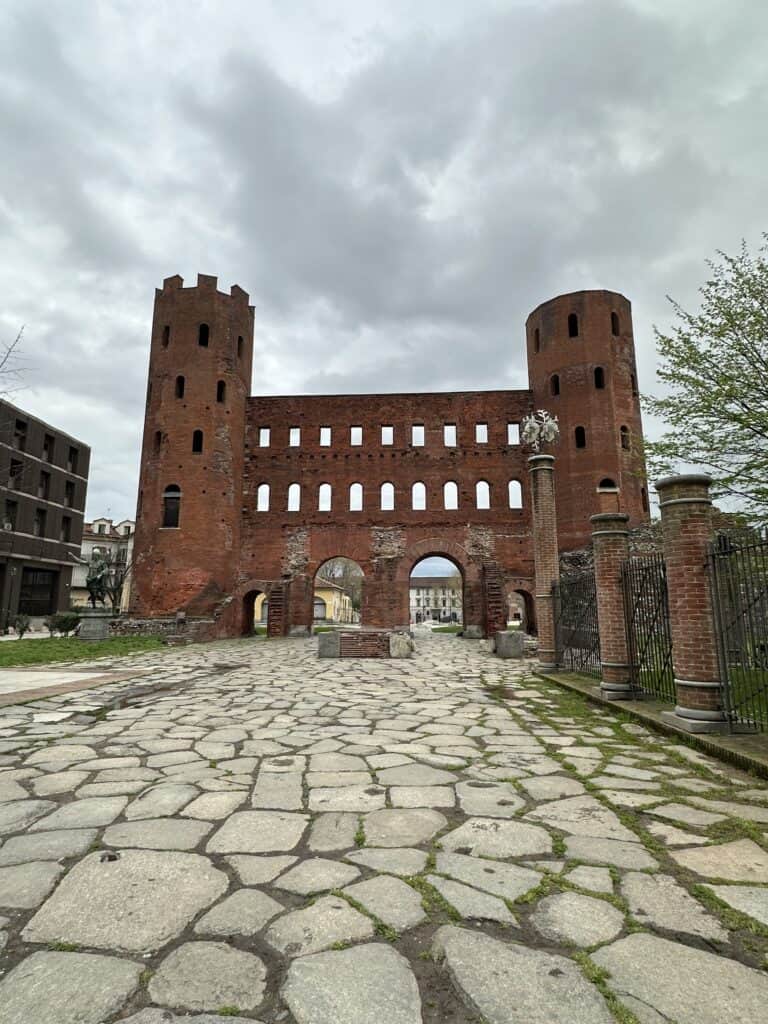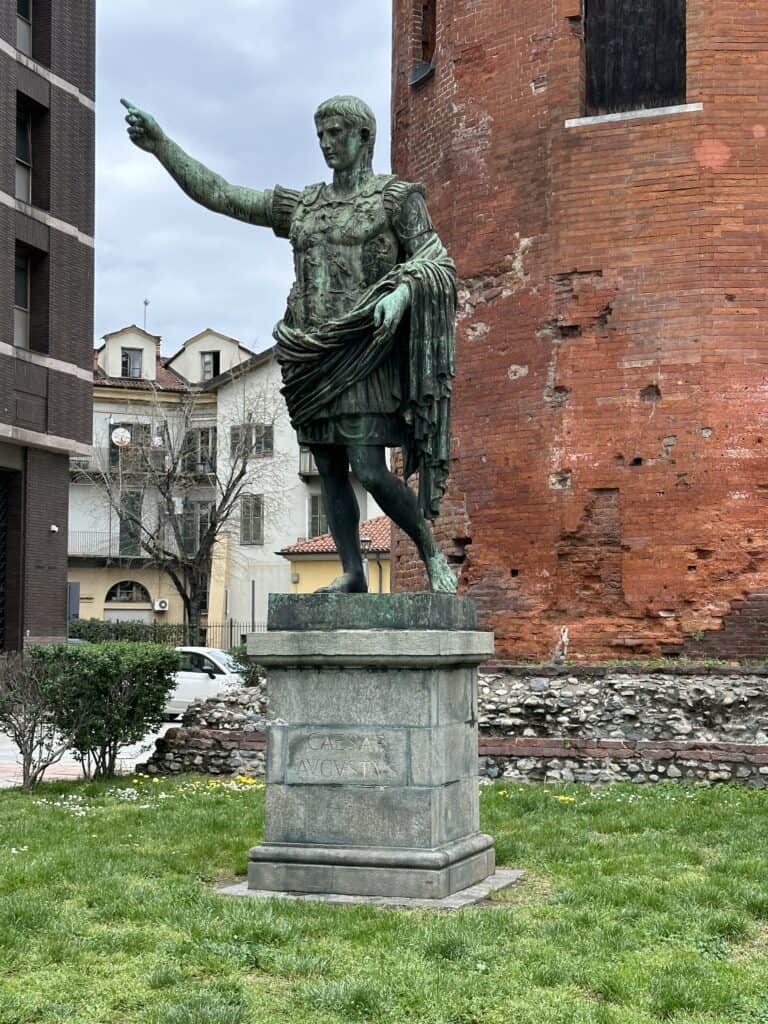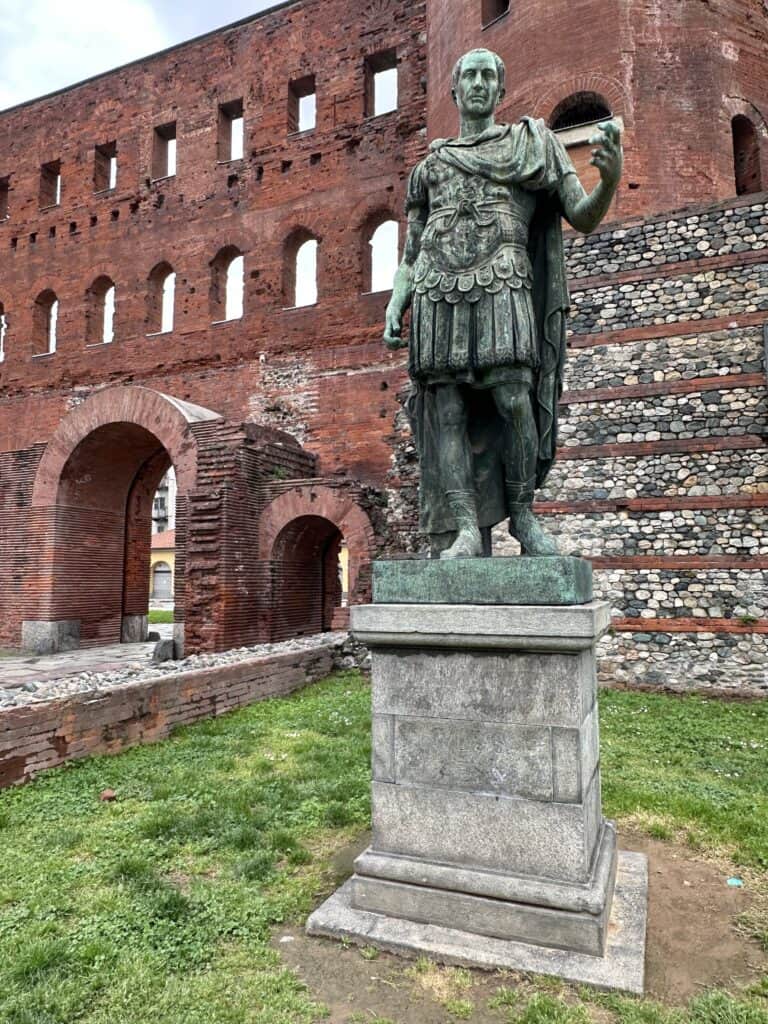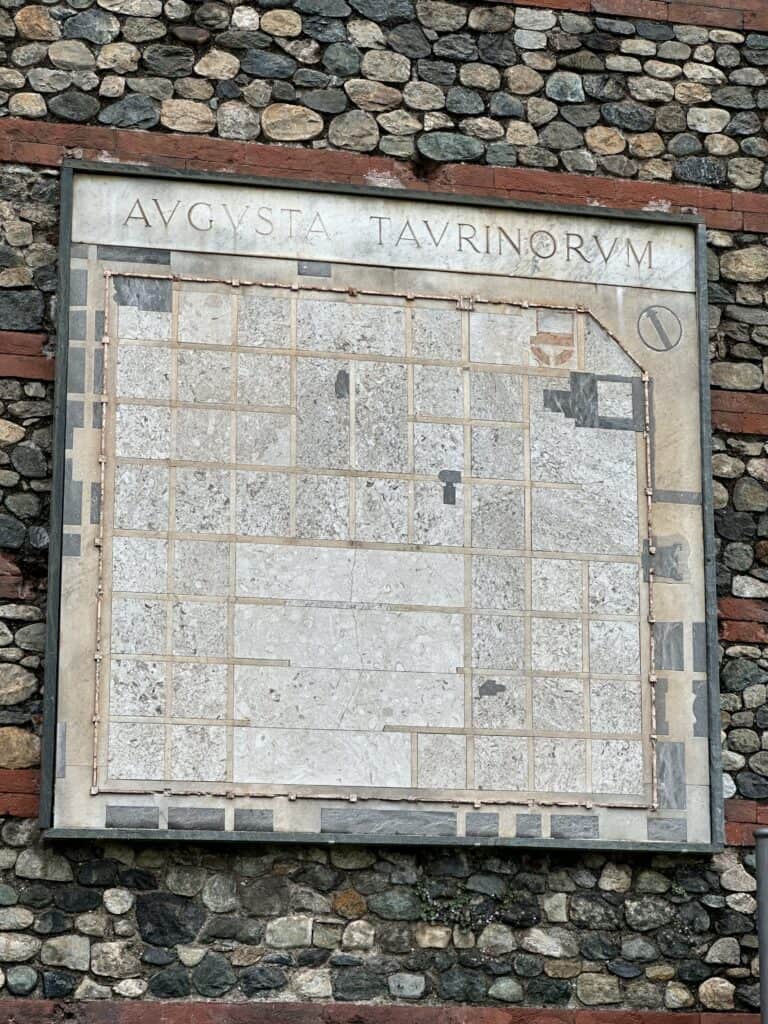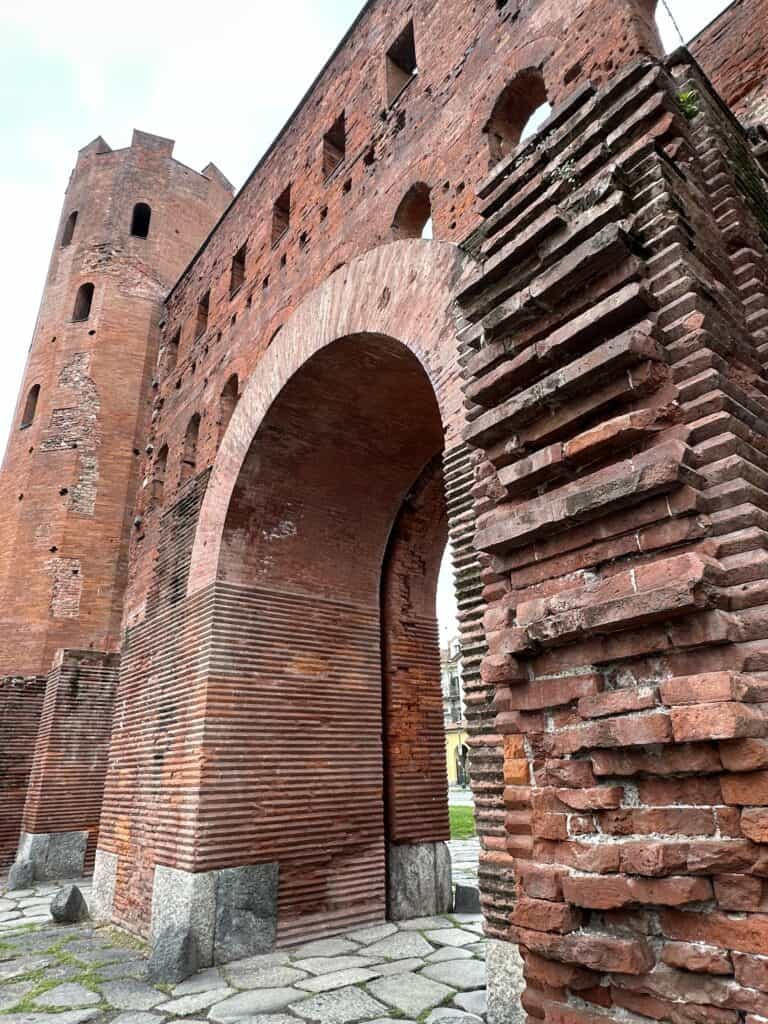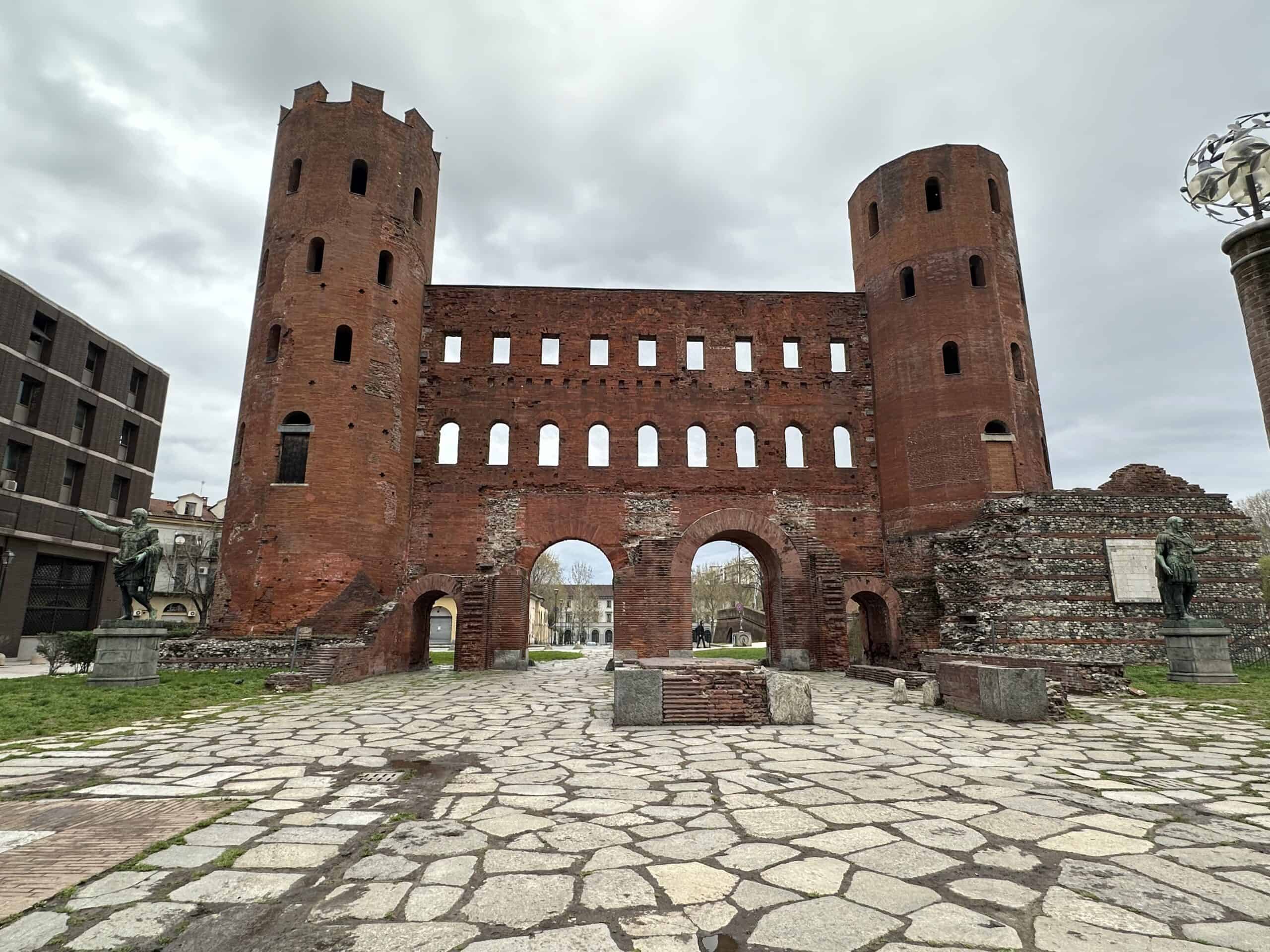
The Palatine Gate was one of the four gateways to Iulia Augusta Taurinorum, Turin at the time of the Romans.
The Palatine Gate was built between the end of the first century AC and the beginning of the second century AC, during the Augustan age.
Turin was founded by the Romans between 25 and 15 BC and was built following the traditional canons of Roman urban planning: a quadrangular grid of streets perpendicular to each other, surrounded by a ring of walls.
Access to the city was guaranteed by four monumental gates, one on each side of the fortification, at the end of the two main streets of the city:
the decumanus maximus, corresponding to today’s Via Garibaldi,
and the cardo maximus, coinciding with the current Via San Tommaso and Via Porta Palatina
Palatine Gate was the one on the northern side, towards the road to Mediolanum (ancient Milan) and Ticinum (today Pavia).
The two bronze statues depicting Emperor Augustus and Julius Caesar are not original from Rome, but date back to 1934.
The current name of the Palatine Gate dates back to the nineteenth century and is linked to the name that the gate took on in the thirteenth century: Porta Palacii (literally “Palace Gate”).
According to these testimonies, the Lombard dukes and the Frankish counts established their official headquarters in the area of the Roman gate. Palatine Gate would therefore be so called because of its proximity to their palace.
The gate maintained its function for a long time, although it seems to have been transformed into a castrum as early as the eleventh century.
The eighteenth-century renovations and the completion of the new defensive curtain radically changed the urban layout of the area and the gate lost its role as an access road to the city. In 1724 King Vittorio Amedeo II ceded the gate and the buildings that had leaned against it to the municipality, which transformed the complex into a prison.
At 1872, with the entry into operation of the New Prisons, it was possible to move on to the complete implementation of the restoration project, also creating a building intended to house classrooms leaning against the internal façade.
In the early years of the twentieth century, it was decided to proceed with the complete liberation of the ancient monument, demolishing all the rear structures and excavating the area of the cavaedium.
The work went on for a long time and in a discontinuous manner until the outbreak of the First World War. In 1935 a new restoration site began, but this time too, the work, over many decades, did not come to an end.
In the 1990s, the Palatine Gate was restored again, both in the original parts and in those relating to the eighteenth-century interventions.
